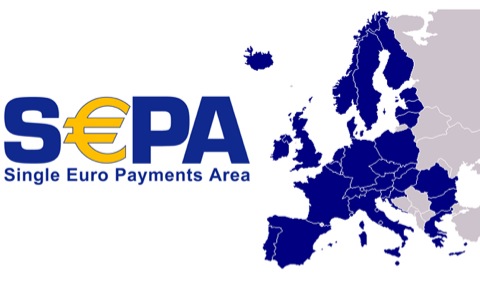This week, we are delighted to feature a post by Manfred Schuck, a payments consultant from Frankfurt. Manfred will co-lead with Elizabeth McQuerry our upcoming Payments in Europe Insight workshop to be held in Mountain View, CA on October 9.
On January 1st, 2001 fifteen European countries introduced notes and coins of a new common currency. At this singular moment, fifteen national currencies ceased to exist and a new star, the EURO, was born. That was also the first step in the creation of SEPA, the “Single Euro Payments Area”!
Among those fifteen countries, there were many different payments schemes, at least one national system per country plus another one for cross-border payments into other Euro-countries. As this was a very costly and inefficient way to do payments, the European Commission put pressure on the banking industry to either come up with a solution for this problem or to face regulation to get that job done.
Looking to avoid regulation, the three European Banking Federations (FBE, ESBG & EACB) came together and created in 2002 the “European Payments Council” (EPC) as a body to organize self-regulation on pan-European payments. As a result of the work of the EPC, the European banking industry came up with new payments schemes: SEPA Credit Transfers (SCT) and SEPA Direct Debits (SDD) as well as the SEPA Cards Framework for card payments in Europe. These methods became valid not only for the 15 Euro-countries, but for all EURO payments throughout the 28 countries of the European Union (EU), as well as with a number of volunteers, like Switzerland and Lichtenstein.
The SCT was first introduced in early 2008 and the SDD later in 2009. It was believed that through the introduction of those two schemes “market forces” would ensure a quick shift to and a progressive use of the SEPA-schemes instead of the old national ones. Nothing like this happened!
As a consequence of the very slow pick-up of the usage of the new SEPA payments schemes, in February 2012 the EU co-legislators, i.e. the European Parliament and the EU-Council, adopted the Regulation No. 260/2012 “establishing technical and business requirements for credit transfers and direct debits in euro” and amended Regulation No.924/2009. Called the “SEPA Regulation” these steps defined February 1st, 2014 as the deadline in the EURO area for compliance with the core provisions of this regulation. In non-Euro-countries, the deadline is October 31st, 2016.
Effectively, this means that as of these dates, existing national EURO credit transfer-schemes have to be replaced by SEPA Credit Transfer (SCT) and SEPA Direct Debit (SDD)!
In 2012 the European Central Bank (ECB) in Frankfurt began carefully monitoring the degree to which the SEPA changeover was taking place in order to ensure that by the February 2014 due date one hundred percent of the credit transfers, as well as the direct debits, would be executed as SCT or SDD.
In parallel, both the financial sector as well as the bank clients undertook multiple efforts and spent a lot of time and money in order to become SEPA-compliant on schedule.
So, by the end of 2013, some EU-countries, mainly smaller ones like Finland, Ireland and Luxemburg, had reached the 100 percent goal and were fully SEPA-compliant, whereas others, especially the large countries like Germany, France or Italy were still far from that target.
As a consequence, in January 2014 the responsible EU-Commissioner took the initiative to convince the governing bodies of the EU (i.e. the European Parliament and the EU-Council) to extend a further compliance grace period until August 1st, 2014 in order to prevent the collapse of payments processing among the larger economies of the Eurozone.
Today, on the doorstep to August 1st, the latest ECB statistics show that the change-over goals have been met and the rate of SEPA-payments is very close to one hundred percent. A few exceptions have been made in countries for “niche products” with a national market share of less than 10%; their grace period has been extended until 2016.
In summary, one can say that full SEPA has been achieved! But this will not be the end of the success story. The next step will be to fully introduce the SEPA-concept into the Non-Euro countries by October 31st, 2016.
When the EURO notes and coins were introduced in 2001, the Eurozone consisted of 15 countries. Nowadays they are 18 countries; on January 1st, 2014 Latvia was the last one joining and on January 1st, 2015 Lithuania will be the next. From the remaining nine EU-countries, seven are obliged to join the Eurozone, as soon as they can meet convergence criteria. Only Denmark and the UK have an option to stay out!
With nine to eleven countries still to join, there will be many further developments in and around SEPA!
This Payments Views guest post was written by Manfred Schuck.


